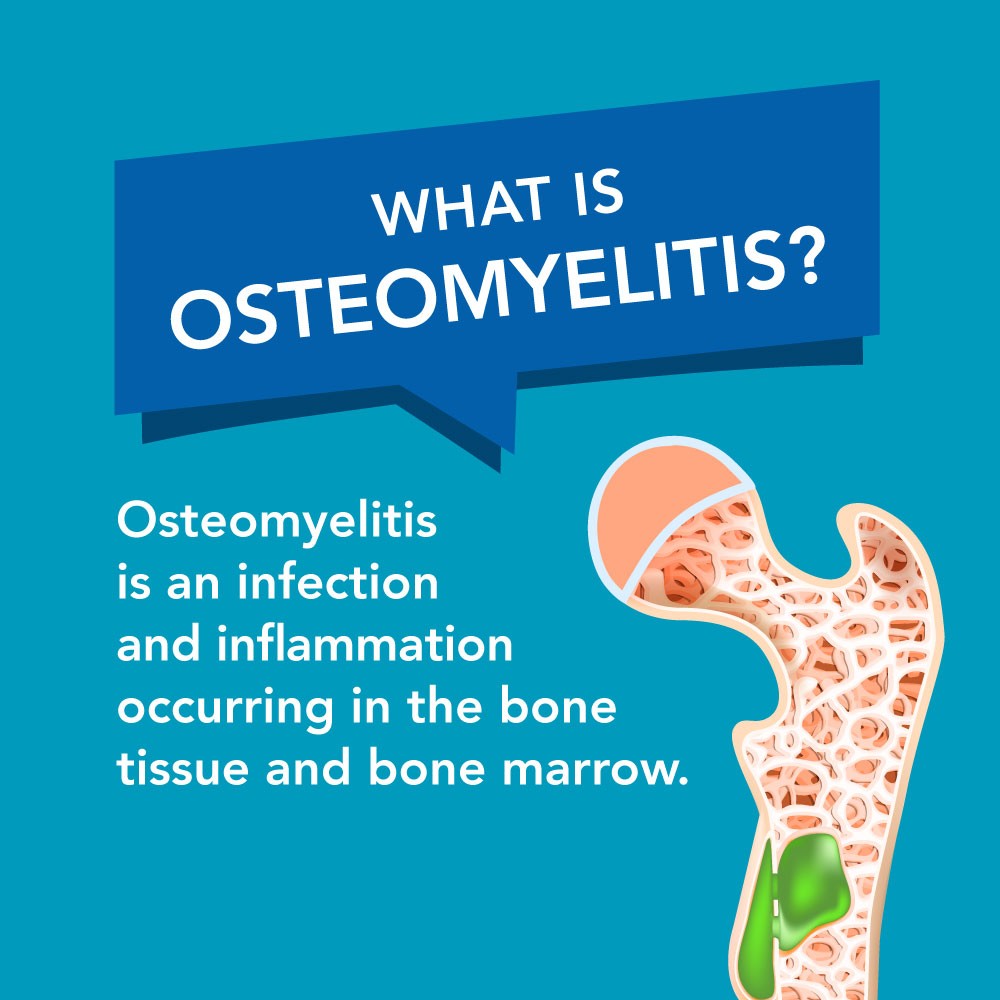Osteomyelitis: When Is Specialized Wound Care or Hyperbaric Oxygen Therapy Indicated?
October 11, 2024

When a patient with diabetes develops osteomyelitis, a serious bone infection, early diagnosis and intervention are critical to avoiding severe outcomes like amputation. Osteomyelitis in diabetic patients often begins with a soft tissue infection in a foot ulcer, which can quickly spread to the bone if not treated promptly. Reduced blood flow to the affected area limits oxygen supply, which impairs the body’s ability to fight infection. This lack of oxygen puts the bone at risk of necrosis, leading to potentially life-altering complications.
More than 20% of individuals with diabetic foot ulcers will develop osteomyelitis. Many of these patients suffer from diabetic neuropathy, a condition that causes loss of sensation in the lower limbs. As a result, they may not feel the pain of an infected wound, allowing it to worsen over weeks or even months without detection.
While osteomyelitis is commonly associated with diabetic foot ulcers, it can also develop after trauma or puncture wounds in the general population, or as a complication after joint replacement. Those with weakened immune systems, including patients on hemodialysis, are at higher risk. Antibiotic resistance further complicates the treatment of osteomyelitis, making timely diagnosis even more critical.
Recognizing Symptoms and the Importance of Early Diagnosis
The symptoms of osteomyelitis can include swelling, redness, burning sensations, pus drainage from the wound, fatigue, fever, and pain. For patients with diabetes, these signs should prompt immediate medical attention to prevent further complications. Without proper treatment, osteomyelitis can become chronic and require ongoing management. Early intervention can not only help prevent amputation but also stop the progression of a difficult-to-treat infection.
Osteomyelitis is diagnosed through a combination of diagnostic tools, including magnetic resonance imaging (MRI), bone culture, bone scan, or biopsy. Blood tests can also indicate the presence of infection by revealing elevated white blood cell counts and other markers. Quick identification of the infection allows for faster treatment and better outcomes.
Special Considerations for Diabetics
People with diabetes must be especially vigilant about foot health. Daily foot exams are essential for detecting early signs of ulcers or infections. Foot complications are the most common cause of hospitalization for people with diabetes, with 60% of diabetic foot ulcers involving some form of infection. Of these, over two-thirds will progress to a lower-limb amputation if not treated effectively.
For wounds that do not heal within 30 days or for complex cases requiring additional care, it’s crucial to seek out a wound care specialist. If osteomyelitis is suspected, aggressive diagnosis and treatment are essential to stop the infection and prevent the need for amputation.
Treatment Approaches and the Role of Hyperbaric Oxygen Therapy (HBOT)
Initial treatment of osteomyelitis includes a combination of aggressive antibiotics and surgical debridement to remove infected tissue. However, when these traditional methods fail to adequately penetrate the bone and the infection persists for six weeks or longer, hyperbaric oxygen therapy (HBOT) can be an effective adjunct therapy.
HBOT delivers 100% oxygen at higher-than-normal atmospheric pressure in a hyperbaric chamber, which enhances the body’s natural healing processes. By increasing the oxygen supply to the bloodstream, HBOT boosts white blood cell activity, reduces swelling, and encourages the growth of new blood vessels. This increased oxygen flow supports healing in the infected tissue and bone.
Wound care professionals should consider HBOT as part of a comprehensive treatment plan for patients with osteomyelitis, especially those for whom antibiotics and standard wound care have proven insufficient. Alongside HBOT, addressing other factors like nutrition, vascular health, and offloading pressure from the affected area can further improve healing outcomes.
Osteomyelitis is a serious complication for individuals with diabetes, and proactive foot care is the first line of defense. Early recognition, prompt diagnosis, and aggressive treatment are crucial to preventing this condition from worsening. If you or someone you know has a wound that is not healing or if osteomyelitis is suspected, we’re here to help them heal. Contact the Center for Wound Healing and Hyperbarics at Southwestern Medical Center, 580.531.6441.
